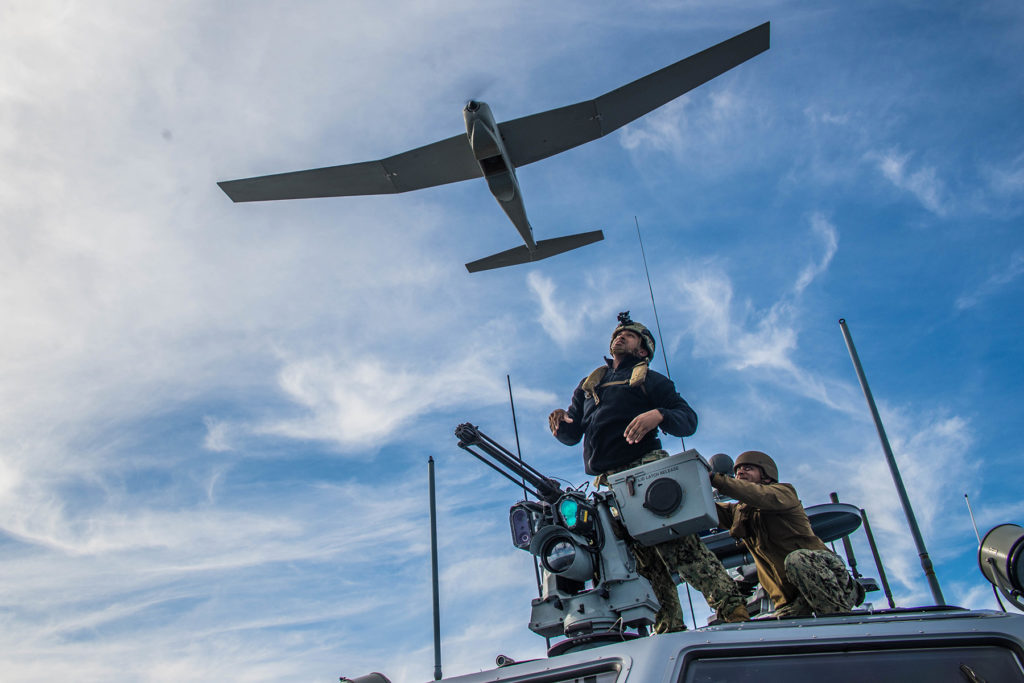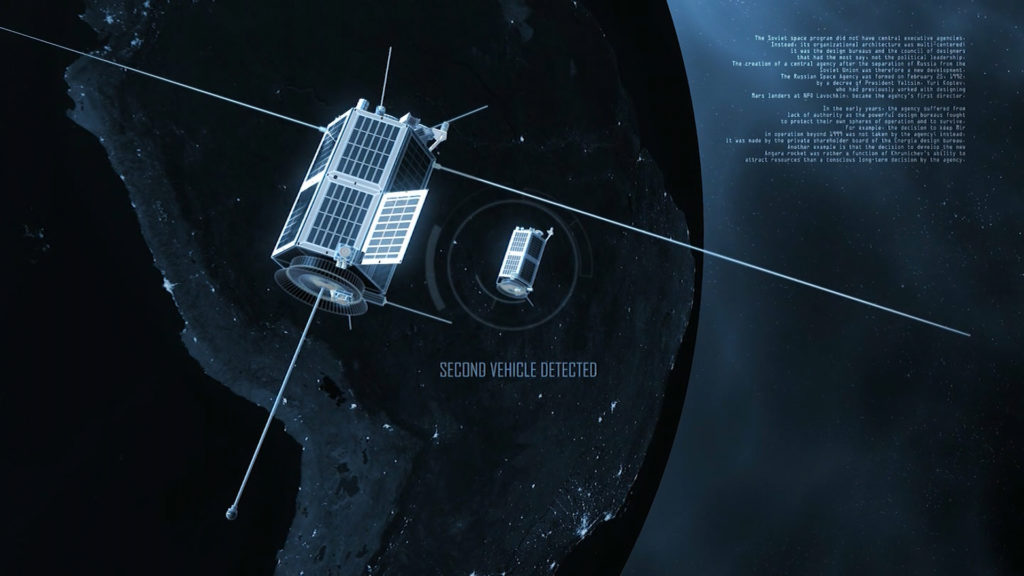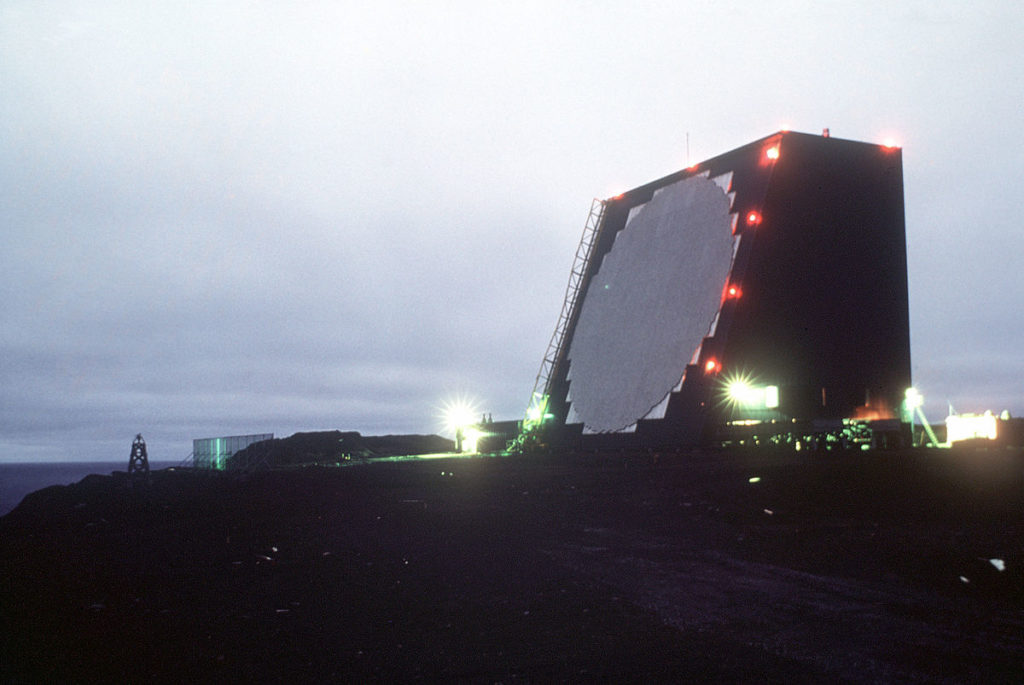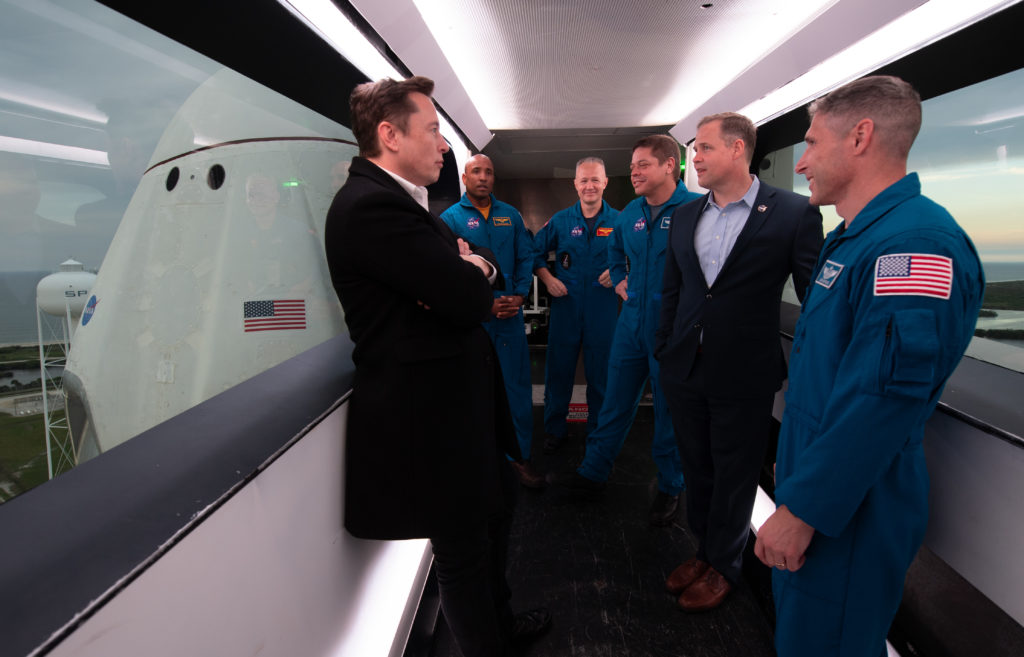On February 25, the Chief of Space Operations for the United States Space Force General John W. “Jay” Raymond and renowned astrophysicist Neil deGrasse Tyson sat down for a virtual talk about space and how America’s newest branch is preparing to secure it. And while the conversation was designed to bolster transparency about space and create a sense of cooperation between America’s scientific community and the military, it also, accidentally, revealed some startling implications about the domain and America’s sprint to retain preeminence over it.
The talk was organized by the Air Force Association as part of the annual Aerospace Warfare Symposium, a professional development event designed to highlight the future technologies and challenges of the aerospace and defense industries. The symposium was held live and later shared on YouTube.
While well-intended, the 40-minute discussion between General Raymond and the ever-spirited Tyson was awkward at times. Occasionally, it felt as the audience had just stumbled across two guys at a bar bantering about top-secret material.
Tyson launched the conversation with the context of space and why he felt the Space Force’s mission is so critical. “Ever since Sputnik, space has been recognized as a strategic asset, or rather a strategic location,” Tyson began. “So it’s not a new thing, it’s actually an old thing that is finally being recognized as it needs to be under the umbrella of national security.”
As he went on in his charismatic, excitable way, Tyson enumerated the critical U.S. assets that rely on, or are intrinsically part of, the space domain. Tyson explained that:
“Wherever you have assets that you value, you’ll want to protect those assets. If they are national assets, you’re going to call a national group to defend that, and that would be the Department of Defense. What do we have in space? We have satellites, of course, that monitor weather and climate — of course, those are different, weather is what happens today and climate is the trends over time — we have satellites that currently monitor agriculture — checking rain, the humidification of regions, and how that is changing — we’ve got communications satellites, and of course we have navigation satellites.”
“The value of our space assets is not just the cost of the design and launch of that one satellite,” he continued, “it is the commerce it enables, which is rising through trillions of dollars of our commerce and our economic stability.”
With that, the astrophysicist turned to Raymond and asked him bluntly: “Do you foresee threats to our space assets?”

Without Space, America Is Kaput
At this point in the interview, I was expecting General Raymond to give a bland retort, something non-offensive and drab. Instead, he confirmed, without equivocation, that if we lost control of the space domain, the United States would be absolutely decimated.
Here’s General Raymond’s response.
“The United States has long known, long recognized, that access to and freedom to maneuver in space is a vital national interest. It underpins our national security, it underpins our intelligence efforts, it underpins our treaty verification, it underpins our economy, it underpins every instrument of national power. The challenge is that the access to space and the freedom to maneuver in space can no longer be treated as a given.”
“There are threats that exist today.”
Our Enemies Have Space Weapons
General Raymond explained that when it comes to defending our space infrastructure — think, satellites — there are two types of weapons systems that we know exist and are operational in both China and Russia. The first type is kinetic weapons. Kinetic weapons, in this case, are missiles launched from the ground and capable of destroying a U.S. satellite in low-Earth orbit “in a matter of minutes.”
But as it turns out, kinetic weapons have a fatal flaw. They turn satellites into pieces of space shrapnel that remain in low-Earth orbit, cluttering up the space for every nation in the domain, even the ones who launched them. Thus, they are not ideal, especially when considering the tens of thousands of pieces of debris already proliferated through the domain.
“We act as the space traffic control for the world,” explained General Raymond later in the interview. “We track 27,000 objects in space today. There’s probably about a half-million that we can’t track because they are too small. Of that 27,000 objects, just shy of 4,000 are active satellites.”
“Just a few years ago it was 1,500,” the general added.
The second type is directed-energy weapons, or essentially lasers. According to General Raymond, Russia and China have what can only be described as lasers that are able to “blind or damage satellite systems.”
But while confirming that both Russia and China have space lasers was surprising enough, what the general said next was mind-boggling.

Satellite-on-Satellite Warfare
In addition to kinetic and directed-energy weapons, Russia and China have been developing offensive satellites engineered to attack and disable U.S. assets.
The first system identified by General Raymond was the Russian “nesting doll” satellite concept.
The Russian Nesting Doll satellite was first spotted back in 2018 when Russia launched a secret mission via its Ministry of Defense, alerting U.S. Space Command. Over several months, reports, like this one from CNN, showed how the satellite, dubbed the Kosmos 2543, “birthed” a second, smaller satellite which in turn “birthed” a third even smaller one. Experts believe the Kosmos 2543 is designed to release some kind of guided munition or projectile to interrupt or destroy satellites in orbit. Russia, of course, denied the accusations.
General Raymond was even quoted in a 2020 Forbes article as having identified the Russian satellite as a weapon system saying the Kosmos 2543 “is further evidence of Russia’s continuing efforts to develop and test space-based systems and [is] consistent with the Kremlin’s published military doctrine to employ weapons that hold U.S. and allied space assets at risk.”
But Raymond didn’t stop there. He went on to describe a Chinese satellite with a robotic arm, which a March 2020 threat assessment described as being able to “grapple and seize” another satellite. These satellites belong to the Chinese Aolong-1 program and are disguised as being used for scientific research and collecting space debris. However, according to the assessment, the Aolong-1 may also be able to cling to a target, like a kind of low-Earth orbit remora, to avoid detection and possibly collect information passively.
While the general didn’t blow the lid off of any new or emerging technologies, he did wander into a logical unicode that all but told our enemies where we’re at in the new space arms race.
Throughout the interview, General Raymond underscored that we cannot take the safety of the spaced domain for granted and that our adversaries, especially Russia and China, are actively developing space weapons. The general explained that the thrust behind the U.S Space Command and Space Force is to maintain our preeminent position by responding to the new emerging threats.

Who’s On First?
Tyson seized the opportunity and asked him directly: “You comment that we are leaders, ‘cause that makes a good soundbite, but, just moments ago, you said that you’re noticing these capabilities — in particular Russia and China, and perhaps [latter-day] participants in space will also be so capable — and now we are responding to threats. So if we’re responding to threats, that means the threat pre-dated our capability… so what assurances do we have that we are going to stay out front rather than sort of dragging behind and saying ‘Let’s do that because they’re doing it?’”
Without missing a beat, the general agreed. “There are no assurances,” he said. “That’s why this business is so important. It is too critical to this nation to not be the leaders.”
Then, as if the general himself were zapped by a directed-energy weapon, he pivoted:
“I-I’d push back a little bit… We have been the leaders in space, we are the leaders in space… the end of the Soviet Union we clearly… have had… we’ve got the best capabilities… we’ve integrated those capabilities to great effect… eh… GPS is the gold standard, for example, across the world… I mean we have the best… ah.. capabilities, and there’s no doubt about that.”
Thanks for blowing up our spot, Neil.
I’m no national security guru, but the general’s stammering response means one of two things. One, Space Force is absolutely head and shoulders beyond the capabilities of Russia and China and General Raymond had to play mental Jenga as not to confirm the presence of our more-lethal, more-advanced kinetic, directed energy, and low-Earth orbit weapons to our enemies. Or, we are racing to catch up.
The general caught his breath and went on.
“And now — although we have the world’s best capabilities — we now have a new mission area. And that’s that you can’t just launch a satellite, build a satellite — and exquisite satellite — launch it, and assume it’s going to be there forever. You have to be able to protect and defend it. That’s a new mission area. That’s why the United States made the decision to stand up both the U.S. Space Command — the operational arm, the warfighting arm — and the Space Force which is the organize, train and equip arm.”
Are we leaders, or are we responding to a “new mission area” of defending our assets from enemy interference?

Space, the Next Big Market
If you’ve been around the military for more than a day, you know that where the U.S. military goes, so go the defense industry contractors followed closely by private business. For many, it’s the not-so-palatable piece of our warfighting machine; from “liberation” to “nation-building” our military operations are the pointy end of a large American economic spear.
And why not? Even the most fiscally conservative presidents spend hundreds of billions of dollars a year on defense to “protect American interests” globally, which is a watered-down way of saying “defending our economy.” In today’s climate, it’s also known as the Great Power Competition.
Morgan Stanley predicts that space will generate more than one trillion USD in revenue by the year 2040, compared to $350 billion in 2020. Companies like SpaceX, Virgin Galactic are energizing markets with promises of Mars rockets and space tourism. According to a report last month, a new ETF (Exchange Traded Fund) focused on “technologically enabled products and/or services that occur beyond the surface of the Earth” is about to drop. The first-ever Space Hotel is scheduled to open its hatches in just a few years, according to a New York Post.
The U.S. Space Command is tasked with, it seems, not just securing the domain from handsy Chinese satellites and Russian nesting dolls, but also the accompanying trillions of dollars in economic expansion. By militarily owning space, American companies can more easily expand into the domain and capture key pieces of technology through trademarks and the like. Our Space Force Guardians, it seems, are also keeping a close eye on Earth, and more specifically Wall Street.
But the general then said something that made me think there’s even more at stake here.
“In WWII,” he explained, “the Air Force had 1,000 bombers with nine bombs on each bomber. So 9,000 bombs going after one ball-bearing factory. And on a good day, about 100 of those bombs would strike somewhere close to the target. Look at where we are today; you can take off a bomber, with multiple weapons and hit multiple targets all very very precisely. And the way you do that, is you integrate multi-domain capabilities into that bomber: space and cyber. That’s the advantage that that integration provides.”
“So if we lost space,” he added, “do we have 1,000 bombers in our Air Force? We don’t.”
Suddenly the race for space feels immediate and the Space Force a fledgling bird of prey fighting to be first out of the national security nest. Sure, there’s an outdated international agreement that disallows weapons of mass destruction in space and military bases on moons or planets, but since when has an international agreement stopped an American adversary from enriching uranium, skirting sanctions via the black market, or attacking us through proxies?
Or as General Raymond so bluntly put it, “space is the Wild, Wild West. There really [are] no rules.”
This article was originally published on March 2nd, 2021.










COMMENTS
You must become a subscriber or login to view or post comments on this article.